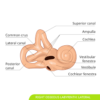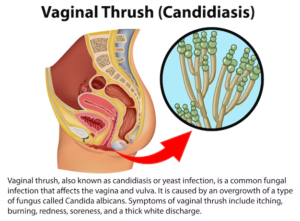Understanding Nephrotic Syndrome: An Ayurvedic Perspective
Understanding Nephrotic Syndrome: An Ayurvedic Perspective is a kidney disorder characterized by significant proteinuria, low serum albumin levels, and edema. This condition can lead to severe complications if not managed properly. While conventional medicine often focuses on pharmacological interventions, Ayurveda offers a holistic approach to treatment and management, emphasizing dietary changes, herbal remedies, and lifestyle modifications.
What is Nephrotic Syndrome?

Nephrotic Syndrome is not a disease in itself but a collection of symptoms resulting from damage to the kidneys’ filtering units, the glomeruli. This damage can be caused by various conditions, including diabetes, lupus, infections, and certain medications. Key features of Nephrotic Syndrome include:
- Proteinuria: Excessive amounts of protein in the urine.
- Hypoalbuminemia: Low levels of albumin in the blood.
- Edema: Swelling, particularly in the legs, ankles, and around the eyes.
- Hyperlipidemia: Elevated levels of lipids in the blood.
The Ayurvedic Approach
Ayurveda, the ancient Indian system of medicine, views health as a balance between the mind, body, and spirit. In Ayurveda, kidney disorders are often associated with imbalances in the body’s doshas (Vata, Pitta, and Kapha). Nephrotic Syndrome is primarily considered a Kapha disorder due to the accumulation of fluids and mucus, but it can also involve imbalances in other doshas.
Dosha Imbalances
- Kapha: Associated with water and earth elements, excess Kapha can lead to fluid retention and edema.
- Pitta: Imbalances can contribute to inflammation in the kidneys.
- Vata: Disruption in Vata can affect the body’s ability to eliminate waste and toxins.
Ayurvedic Diagnosis
Ayurvedic diagnosis involves a detailed examination of the patient, including:
- Pulse Diagnosis (Nadi Pariksha): Understanding the state of the doshas through pulse examination.
- Tongue Examination: Analyzing the tongue’s appearance for signs of imbalance.
- Observation of Symptoms: Noting the patient’s physical and emotional state.
Key Symptoms in Ayurveda
In Ayurvedic terms, Nephrotic Syndrome may manifest as:
- Sotha: Swelling due to water retention.
- Aruchi: Lack of appetite, often seen in kidney disorders.
- Kshaya: Weakness and fatigue.
Ayurvedic Treatment Principles
The Ayurvedic treatment for Nephrotic Syndrome focuses on restoring balance to the doshas, enhancing kidney function, and reducing symptoms. Here are some key principles:
1. Dietary Recommendations
Diet plays a crucial role in managing Nephrotic Syndrome. An Ayurvedic diet for this condition should be:
- Low in Salt: To reduce water retention and edema.
- Rich in Protein: Including plant-based proteins like lentils and beans, as well as dairy products in moderation.
- Incorporate Diuretic Foods: Foods like cucumber, watermelon, and coconut water can help promote urination and reduce swelling.
- Avoid Processed Foods: Reduce the intake of sugars and refined carbohydrates, which can aggravate symptoms.
2. Herbal Remedies
Ayurvedic herbs can support kidney health and restore balance. Some effective herbs include:
- Gokshura (Tribulus terrestris): Known for its diuretic properties and ability to enhance kidney function.
- Punarnava (Boerhavia diffusa): Renowned for its ability to reduce edema and support kidney health.
- Bhumi Amla (Phyllanthus niruri): Helps in detoxification and supports liver and kidney function.
- Turmeric (Curcuma longa): Acts as a potent anti-inflammatory agent and supports overall kidney health.
3. Lifestyle Modifications
Lifestyle changes are essential in managing Nephrotic Syndrome:
- Regular Exercise: Gentle activities like yoga and walking can improve circulation and kidney function.
- Stress Management: Techniques such as meditation and pranayama (breath control) can help reduce stress, which may exacerbate symptoms.
- Adequate Hydration: Drinking enough water supports kidney function but should be balanced according to individual edema levels.
4. Detoxification Procedures
Panchakarma, a detoxification process in Ayurveda, can be beneficial for those with Nephrotic Syndrome. Procedures such as Virechana (therapeutic purgation) can help eliminate toxins from the body, but these should only be conducted under the supervision of a qualified Ayurvedic practitioner.
5. Regular Monitoring
Regular follow-ups and monitoring of kidney function are vital. Ayurvedic practitioners will often assess the patient’s progress through pulse diagnosis and other methods to ensure that the treatment is effective and the doshas are balanced.
Integrating Ayurveda with Conventional Medicine
For many patients, a combined approach that includes both Ayurvedic and conventional treatments may provide the best outcomes. Patients should work closely with their healthcare providers to ensure that all aspects of their health are considered. It’s essential to communicate any Ayurvedic treatments being used to avoid potential interactions with conventional medications.
Conclusion
Nephrotic Syndrome can significantly impact quality of life, but with the right approach, its symptoms can be managed effectively. Ayurveda offers a holistic framework for treatment that emphasizes balance, diet, and natural remedies. By focusing on restoring harmony within the body and supporting kidney health, individuals can improve their overall well-being.
As always, it’s crucial to consult with healthcare professionals before starting any new treatment regimen. With appropriate care, individuals with Nephrotic Syndrome can lead healthy and fulfilling lives.








Leave a reply